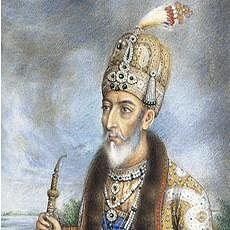Test: Modern Indian History- 2 - Class 8 MCQ
10 Questions MCQ Test GK Olympiad for Class 8 - Test: Modern Indian History- 2
Who was the author of famous revolutionary song "Sarforishi ki tamanna ab hamare dil mein hai"?
"Long years ago we made a tryst with destiny, and now the time comes when we shall redeem our pledge, not wholly or in full measure, but very substantially. At the stroke of the midnight hour, when the world sleeps, India will awake to life and freedom." These lines comes from the speech of a very well known Indian personality. Name him.
| 1 Crore+ students have signed up on EduRev. Have you? Download the App |
Who was the last Mughal emperor deposed by the British and exiled to Burma after the Indian Rebellion of 1857?


In which year capital of India was shifted from Kolkata to Delhi?
'Doctrine of Lapse' was the policy devised by the Governor General of the East India company in India. This doctrine was based on the idea that in case a ruler of dependent state died childless, the right of ruling over the state reverted or lapsed to the sovereign. Who among the following devised this 'Doctrine of Lapse'?
Consider the following statements regarding All India Trade Union Congress:
- It was established in 1920 by M G Ranade.
- Its first session was presided over by Lala Lajpat Rai.
Which of the statements given above is/are correct?
Consider the following statements regarding religion in the Indus Valley civilisation:
- Worship of male deity is identified through the Pashupati seal.
- Pipal is said to have been worshipped.
- Large temples are found where daily rituals were practiced.
Which of the statements given above is/are correct?
Why did India industrialise only gradually in the time of Britishers?
Which of the following was not the outcome of Jallianwalah Bagh massacre?
In which commodity was long distance trade carried out during Indus Valley civilisation?
|
16 videos|12 docs|33 tests
|
|
16 videos|12 docs|33 tests
|

















